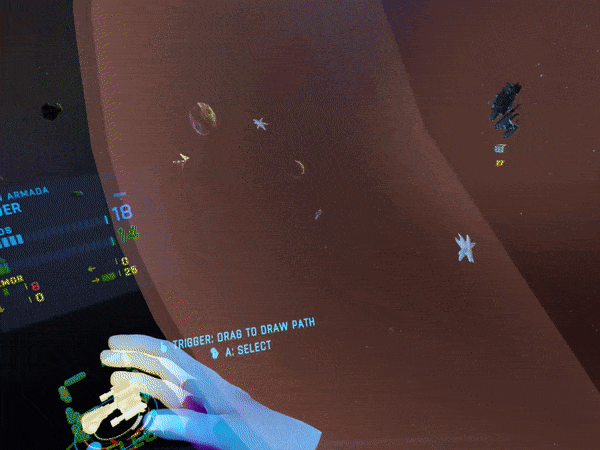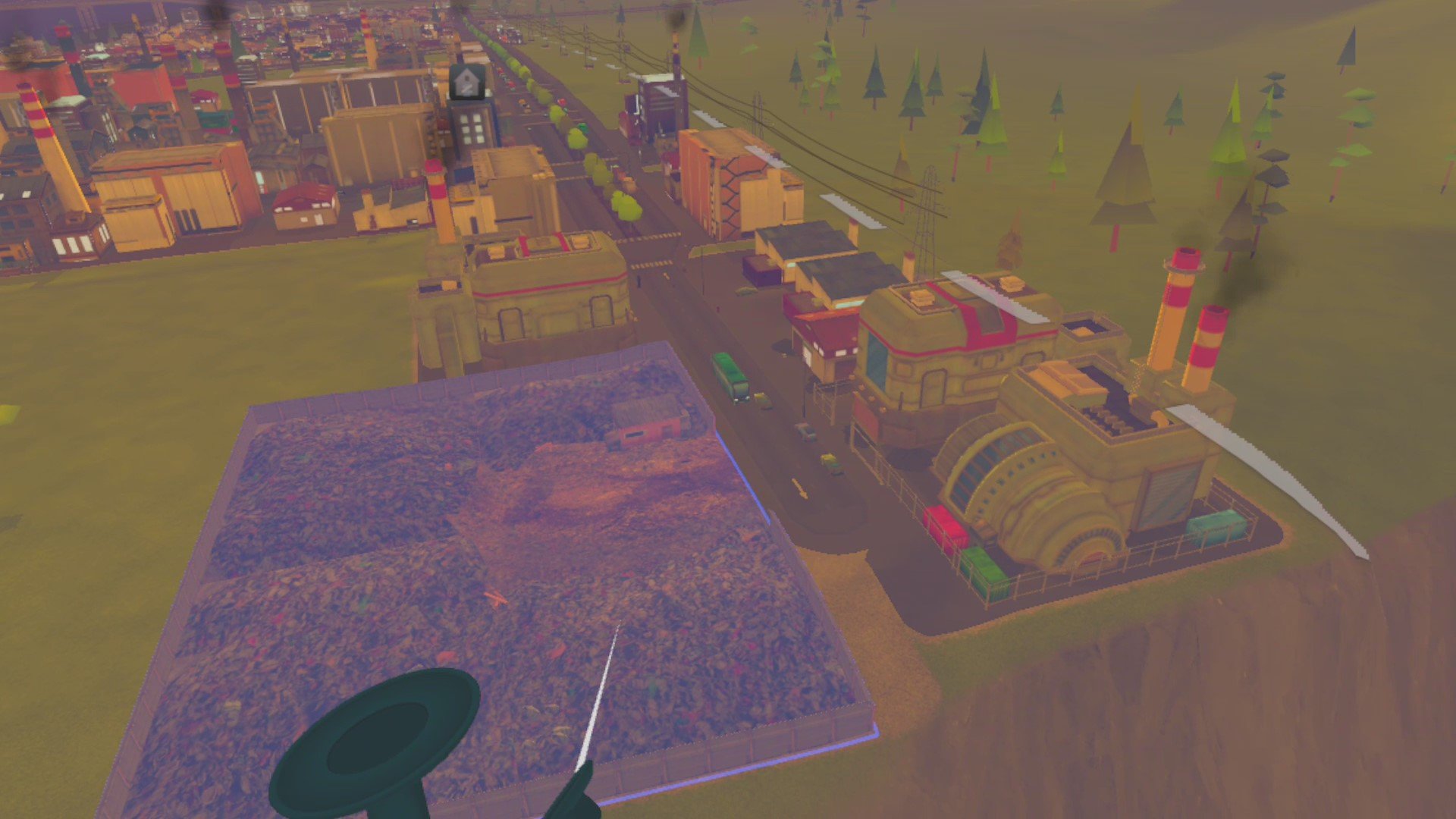Buying A VR Head Strap - The Hidden Cost Of Virtual Reality Headsets
From the mass marketed Quest 3 to the extremely expensive Apple Vision Pro, there is one universal problem that tech reviewers and even VR enthusiasts have with most VR headsets on the market.
They’re uncomfortable.
Whether that’s because the headset itself is too heavy for your face that day or not, many VR lovers and those who briefly try a Virtual Reality headset end up with a similar issue, and that’s that the headstrap doesn’t feel comfortable.
From the mass marketed Quest 3 to the extremely expensive Apple Vision Pro, there is one universal problem that tech reviewers and even VR enthusiasts have with most VR headsets on the market.
They’re uncomfortable.
Whether that’s because the headset itself is too heavy for your face that day or not, many VR lovers and those who briefly try a Virtual Reality headset end up with a similar issue, and that’s that the headstrap doesn’t feel comfortable.
This issue might manifest itself in various forms. Your ears burning, a headache, motion sickness, eye strain, chafing, and other uncomfortable symptoms. All of them easily able to take you out of the immersion of a Virtual Reality experience, ruining the entire point.
Why is this? The default head strap on many commercially sold headsets is absolutely inadequate and will become annoying to use well before the user gets wants to take the headset off or the battery runs out of power. There are tricks to make the default head straps slightly less uncomfortable. What any heavy VR user will inevitably say is, just get a newer, better one.
There are a ton of third party headstraps for sale, and even improved and more comfortable versions sold by the companies that make the headsets.
Promotional image for a Bobo VR headstrap including a battery. A popular third party VR headstrap.
So… why not give first time VR users a better impression of your headset by making the head strap it comes with actually good and comfortable to use?
Well, to drive down production costs of course. While there is no definitive answer here on how improving the head straps that ship with VR headsets would change the cost of the headset, there is the possibility that the headset could still be sold for the exact same amount.
Then again, an additional accessory can be sold for more money on its own and generate a whole new line of profit. While the consumer is already spending several hundred, or well over a thousand, dollars on a piece of tech. What’s seventy or a hundred more on accessories?
Until default head straps improve to the point where they don’t become immersion breaking and annoying so easily then keep in mind that if you really want to get your money’s worth out of that expensive VR headset there is an additional cost.
The cost of buying a headstrap that makes using it comfortable.
Cities VR Does Not Need to be in VR
Cities VR, the Virtual Reality version of Cities: Skylines, is out shortly after being announced in the 2022 Meta Quest Gaming Showcase. This means that I finally have a City Builder to talk about and do shenanigans with on my Youtube channel, but it also means that a whole new genre is available on the Meta Quest 2.
However this comes with some questions, the most important of all being... does Virtual Reality add anything to the Cities: Skylines experience?
Cities VR, the Virtual Reality version of Cities: Skylines, is out shortly after being announced in the 2022 Meta Quest Gaming Showcase. This means that I finally have a City Builder to talk about and do shenanigans with on my Youtube channel, but it also means that a whole new genre is available on the Meta Quest 2.
However this comes with some questions, the most important of all being... does Virtual Reality add anything to the Cities: Skylines experience?
Not Intended for Virtual Reality
Now I'd like to start this by saying that I love to see VR come to new genres, and regardless of whether or not traditional City Builders benefit from VR, I love to see new experiences in Virtual Reality. At the end of the day, even if something doesn't work out we will all still learn and grow as players and as developers. That being said, I don't think there's necessarily a ton to learn here. I have a lot of the same gripes with Cities VR as I had with Eternal Starlight, and now they’re even worse.
For the vast majority who have never heard of Eternal Starlight, it is to the RTS genre as Cities VR is to the City Builder genre on the Meta Quest 2. Eternal Starlight is the only RTS on the Quest 2. Now those gripes that I mentioned were basically this: Eternal Starlight takes a genre built for flatscreen gaming and moves it to VR, but doesn't add enough to make it work better in VR than it could on a flat screen.
Still, Eternal Starlight had the benefit of utilizing 3D space effectively in its combat and controls, and being a game originally made for Virtual Reality. Due to this it would actually utilize hand controls extensively in its basic interactions.
Cities VR does not benefit from that as it is a direct port of an experience built for flatscreen to Virtual Reality. There are plenty of games that are also ports without much change to gameplay, but are still fantastic. Take Doom3Quest by Dr Beef and Co. for instance. It is a direct port of Doom 3, an early 2000s horror shooter, but it is also a fantastic game on the Quest 2. The difference between Doom3Quest and Cities VR is a difference of genre.
Doom 3 is a first person shooter, and the genre conventions of first person shooters translate very well to Virtual Reality. After all VR is the ultimate form of First Person. There is as little as possible between the player and the virtual experience, not even the edges of a screen to distance what they are experiencing from their senses. Pointing a weapon is very natural to do with your physical arms and so is made even more intuitive in VR when compared to pointing that same weapon with a mouse.
The Genre Question
The City Building genre is actually more constrained by Virtual Reality. On a normal screen spreadsheets, menus, and options for building and managing can be compressed into side bars and expanded into their own windows. There is a lot of real estate to cover on a monitor in Virtual Reality a player can only be expected to handle a single menu in their face at a single time.
All selections must be done using a much more limited control scheme with no full keyboard available to use. Selections must be done more slowly with selection wheels and a limited number of buttons. This effectively means that the player can view less information and access that information less efficiently. Meaning that managing their city is more difficult overall than it would be on a flat screen.
So if a City Builder is made harder by being in VR, is it at least made more beautiful?
Is it Better Looking?
Well, the answer will be up to your opinion. To someone like myself who loves Virtual Reality as a way to become closer to experiences that otherwise would be either impossible to access or, in the case of flatscreen gaming, less immersive, it still has some charm.
Zooming through my city like a bird, I can see the people go to work. I can see ambulances and other emergency service vehicles go to their destinations and assist my citizens. By craning my neck I can see my living city from the same perspective as some omnipotent god.
However I am not an omnipotent god. If there is any role to play in Cities VR it is that of a Mayor or other Public Servant. Beholden to keep your people happy because the rules of the game, as set in the original Cities: Skylines, incentivize you to. So this view does not take me closer to the experience that the game attempts to replicate. Rather it is a gimmick.
It gives the opportunity for some cool visuals, and building is a little more fun in VR. Overall the view is much the same on a headset as it is on a screen. The only difference is that the controls are not as good. Not to mention, most computers have the ability to play the same game at a higher level of visual fidelity. It is sometimes painfully obvious how limited the hardware of the Meta Quest 2 is in displaying this game.
So Why Does Cities VR Exist?
From my limited knowledge of the business of games, a PCVR version of Cities: Skylines could have been added on to the original game for those who own it. Just as similar games such as The Forest have done. That would have let true VR fanatics take advantage of it. Instead it was decided that a separate port and release on to the more accessible Meta Quest 2 should be undertaken. No doubt Meta themselves desired this, as they are clearly pushing to have new quality titles released on their standalone platform.
Though at the same time Cities VR does not seem to be a lot for thirty dollars. It is a straightforward port of a game in a genre that does not benefit from being in Virtual Reality. For these reasons I can answer the original question stated in this article with certainty.
No, Cities: Skylines is not enhanced by being in Virtual Reality. VR is a gimmick to this game, as it was not originally made or intended for VR, and no new mechanics or provisions have been made to enhance it as a VR experience. Maybe one day there will be a city builder, which was built specifically for VR, that is better for being a Virtual Reality experience. That day is not today, and that game will need a lot of work and thought to be achieved.
If you really want to experience a city builder in VR then Cities VR is available only on the Meta/Oculus Quest 2 for 29.99$.












